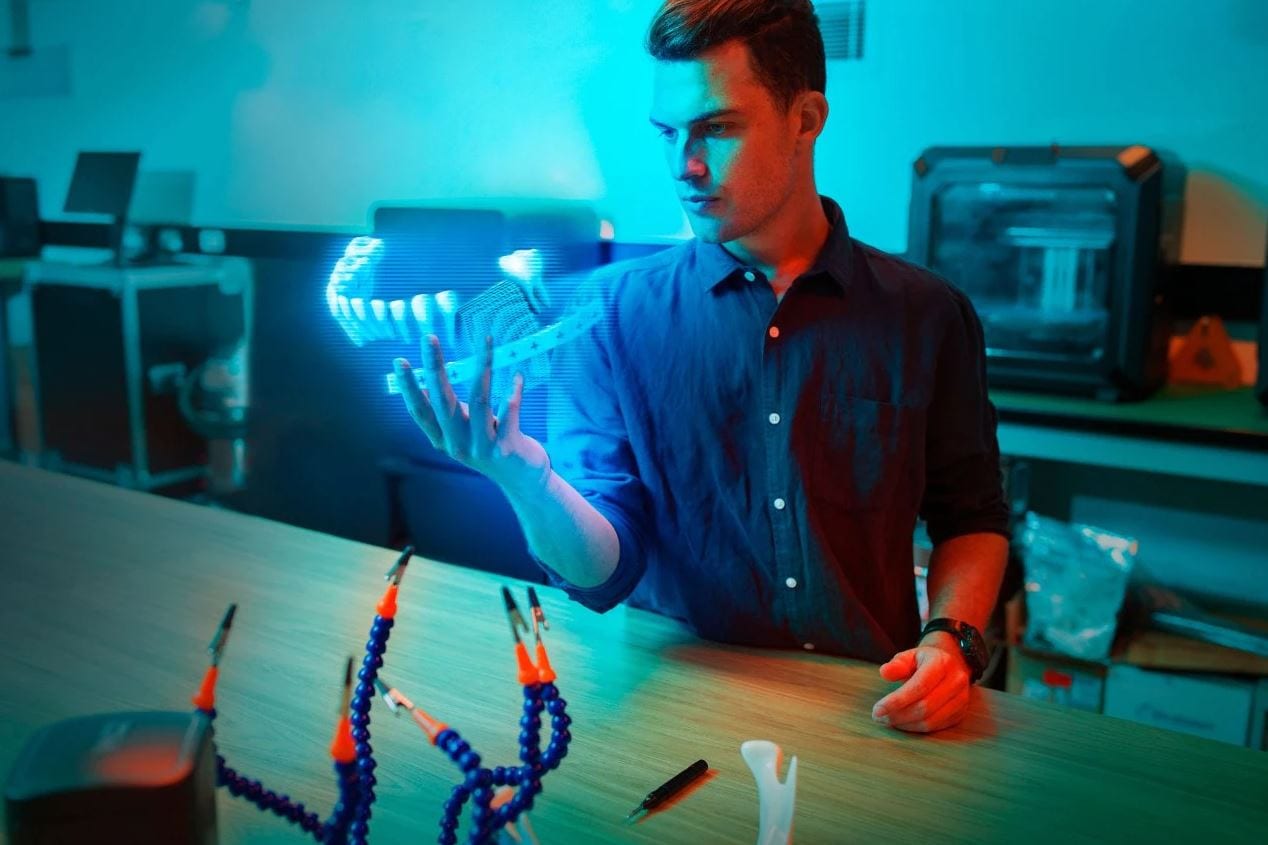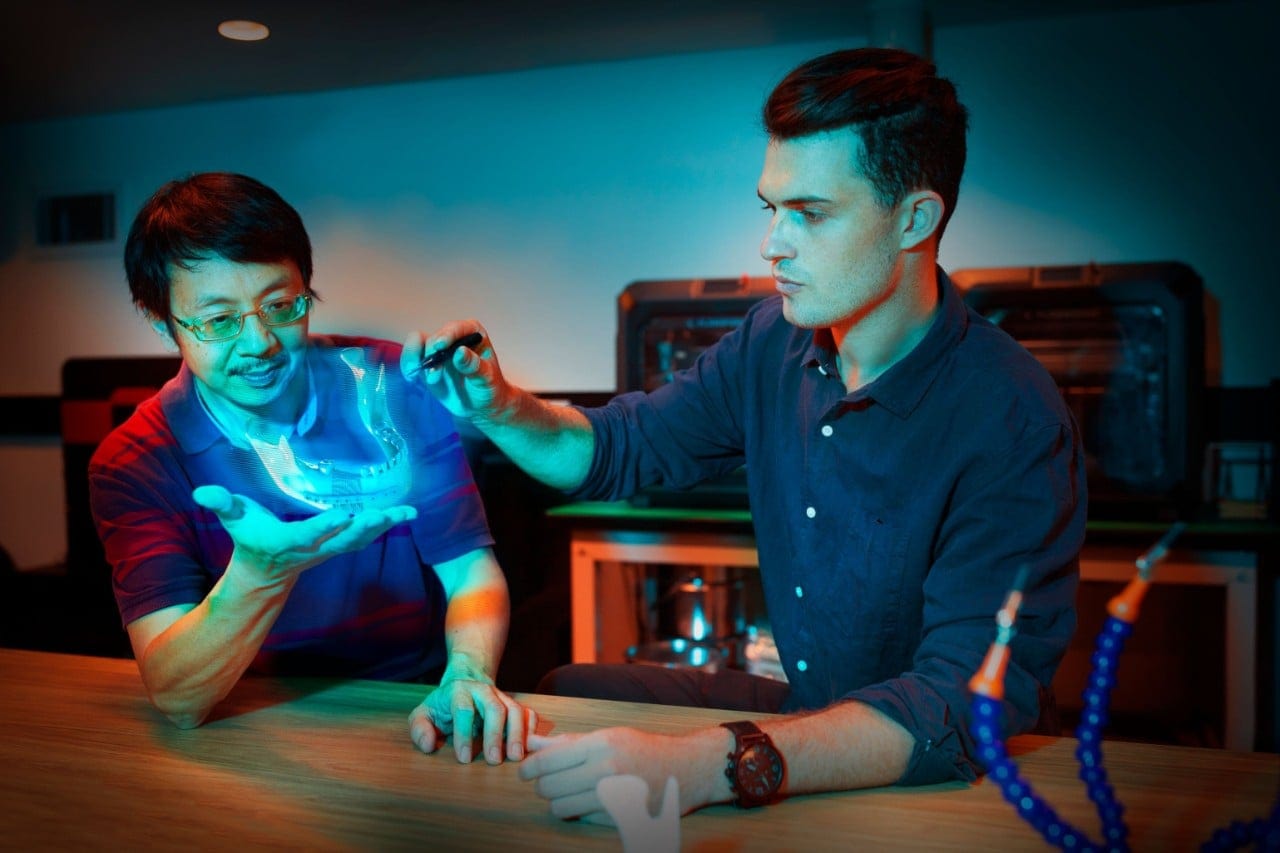Jawbone reconstruction – or orthognathic surgery – is a complicated medical procedure whereby a person’s jaw is treated for significant trauma, such as from a car crash or gunshot wound, or diseases like oral cancer.
Jaw reconstruction surgery involves replacing damaged or diseased bone tissue with an implant, typically a titanium plate or prosthesis, with patient recovery taking as long as twelve weeks. Complications like implant failure and infections are common, potentially requiring repeat surgery which can place significant burden on a patient.
In recent years, biomedical engineers have developed a new generation of medical implants designed to not only substitute bone, but to help regenerate tissue back to its original state using 3D-printed tissue scaffold-fixation systems. These devices enhance the innate healing potential of human tissue, using a scaffold as a temporary support structure for the surrounding cells to attach to and grow. Eventually, the scaffold is expected to dissolve into the blood stream, leaving new tissue in its place.
Ben Ferguson, a PhD student in the University of Sydney’s School of Aerospace, Mechanical and Mechatronic Engineering, is developing a surgical planning tool to assist surgeons in planning complex jawbone reconstruction procedures using these new generation devices.
Using advanced computational technology and decision-making algorithms, the tool works by generating a ‘digital twin’ of the patient using CT scan data. It then rapidly simulates different designs of the implant before 3-D printing the final, optimal design, allowing surgeons to perform a digital ‘rehearsal’ prior to theatre.
“Nowadays, it would be unthinkable to construct a building without running an engineering simulation on it beforehand. This is the industry standard in civil engineering – the same expectation should be applied to surgery on a human being,” said Mr Ferguson, who is due to submit his PhD in September.

“The jaw is a complex area – required to talk, eat, chew and perform tasks that require both finesse and strength. Because of its complexity, we want to give orthognathic surgeons the best tools so they are set up for success – hopefully reducing repeat surgeries and improving patient outcomes,” he said.
“A bone implant design may work in one patient, but it may fail in another. If it was you – you would probably want a team of surgeons and biomedical engineers to run a simulation and assessment of the medical device in your body before it is actually implanted.”
The surgical planning tool combines computer-aided design (CAD) tools with high-fidelity computer-aided engineering models and optimisation algorithms that can accurately simulate the medical device while under physiological load.
Mr Ferguson’s supervisor, Professor Qing Li, said: “In addition to pre-surgical planning, this simulation data can also assist the surgeon in optimising the medical device’s design, helping them resolve issues that inevitably arise when designing a device that must meet multiple design and medical objectives,” said Mr Ferguson.
“It is a careful balancing act. For example, an implant may need to mechanically stimulate the surrounding tissue to enhance healing, but mechanical stimulation may then increase the risk of implant failure. Our algorithms and data-driven approach help surgeons develop an optimal design without having to rely solely on intuition.”
The researchers have recently partnered with Professor Jonathan Clark AM, Chair of Head and Neck Cancer Reconstructive Surgery at Chris O’Brien Lifehouse to help translate the new technology into a clinical reality. Professor Clark said: “Australia has been a leader in jaw reconstruction since Dr Ian Taylor’s 1974 breakthrough mandibular reconstruction. Since then, jaw reconstruction has evolved substantially: digital tools have been incorporated into pre-surgery planning, allowing surgeons to create more precise devices, with better aesthetic and functional outcomes for patients.”
“What’s really exciting about this tool and data is that they provide the opportunity to evolve the technology beyond form, to also include biomechanical modeling, which can help predict the bone tissue’s response to physiological loads. This kind of analysis – termed CT-based finite element modelling – will be of great importance as we move away from using patient’s own bonefor reconstruction and start to incorporate customised scaffolds in the future.”
Subscribe to AM Chronicle Newsletter to stay connected: https://bit.ly/3fBZ1mP
Follow us on LinkedIn: https://bit.ly/3IjhrFq
Visit for more interesting content on additive manufacturing: https://amchronicle.com/


